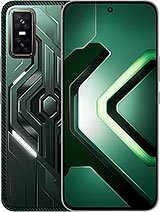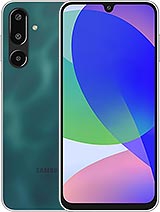Infinix GT 30 alternatives
Tap above to see alternatives.
Redmi Note 14 Pro alternatives
Tap above to see alternatives.
Infinix GT 30

Infinix GT 30
-
Dimensity 7400
4 nm
-
5500 mAh
45W
-
6.78"
1224 x 2720 pixels
-
64 MP
4K@30fps
- Specs
Redmi Note 14 Pro

Redmi Note 14 Pro
-
Dimensity 7300 Ultra
4 nm
-
5500 mAh
45W
-
6.67"
1220 x 2712 pixels
-
50 MP
4K@24/30fps
-
Specs

4x2.6 GHz Cortex-A78
4x2.0 GHz Cortex-A55
4x2.5 GHz Cortex-A78
4x2.0 GHz Cortex-A55
8GB 256GB (UFS 2.2)
8GB 256GB (UFS 2.2)
f/1.75, 23mm (wide), 1/1.73", 0.8μm, PDAF
8 MP
f/2.2, 111˚, (ultrawide), AF
f/1.5, 26mm (wide), 1/1.96", 0.8µm, PDAF, OIS
8 MP
f/2.2, 15mm, 120˚ (ultrawide), 1/4.0", 1.12µm
2 MP
f/2.4, (macro)
1080p@30/120fps
1080p@30/60/120fps
f/2.2, 25mm (wide)
f/2.2, (wide), 1/4.0", 0.7µm
1080p@30fps
SIM1: Nano, SIM2: Nano
11 5G bands
n1, n3, n5, n6, n8, n28, n38, n40, n41, n77, n78
10 5G bands
n1, n3, n5, n8, n28, n38, n40, n41, n77, n78
In this performance comparison, the Infinix GT 30 with its MediaTek Dimensity 7400 (4nm) performs better than the Redmi Note 14 Pro with the Mediatek Dimensity 7300 Ultra (4nm), thanks to superior chipset efficiency.
Redmi Note 14 Pro offers 3 years of OS updates, whereas Infinix GT 30 provides 2 years. For security updates, Redmi Note 14 Pro offers 4 years of support compared to Infinix GT 30's 3 years.
Both Infinix GT 30 and Redmi Note 14 Pro feature AMOLED displays, offering vibrant colors and deeper blacks. In terms of smoothness, Infinix GT 30 offers a higher 144 Hz refresh rate, ensuring fluid scrolling and animations. Redmi Note 14 Pro also boasts a brighter screen with 3000 nits of peak brightness, enhancing outdoor visibility. Notably, Infinix GT 30 offers a higher screen resolution, resulting in sharper visuals and more detailed content.
Both phones are equipped with the same 5500 mAh battery capacity. Both devices support the same wired charging speed of 45W.
Redmi Note 14 Pro offers better protection against water and dust with an IP69 rating.
- Redmi Note 14 Pro – Check price here
¹ Scores can vary even with the same chipset due to RAM, thermals, and software optimization.










